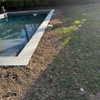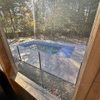Hartford loop design
kitamiman
13 years ago
Featured Answer
Comments (10)
just-a-pb
13 years agokitamiman
13 years agoRelated Professionals
Clinton Swimming Pool Builders · Pearland Swimming Pool Builders · Valinda Swimming Pool Builders · Maple Valley Landscape Architects & Landscape Designers · Saint Matthews Landscape Architects & Landscape Designers · McKinney Landscape Contractors · Fair Oaks Landscape Contractors · Parkland Landscape Contractors · South Portland Landscape Contractors · West Orange Landscape Contractors · Fort Myers Decks, Patios & Outdoor Enclosures · Mastic Decks, Patios & Outdoor Enclosures · Northbrook Decks, Patios & Outdoor Enclosures · Quincy Decks, Patios & Outdoor Enclosures · Salisbury Decks, Patios & Outdoor Enclosuresjust-a-pb
13 years agokitamiman
13 years agokitamiman
13 years agopoolguynj
13 years agokitamiman
13 years agopoolguynj
13 years agojust-a-pb
13 years ago
Related Stories

DECORATING GUIDESSo Your Style Is: Loop de Loop
If you love a dramatic flourish, you may find your head turned by designs that incorporate curls and swirls
Full Story
DECORATING GUIDESFigured Velvet Piles On a Luxurious Look
When is it enviable to be a little loopy? When the loops comprise a gorgeously textured fabric like this one
Full Story
ARCHITECTURECity View: Chicago's Contemporary Design Will Blow You Away
Take a whirl through the Windy City's interiors and you might be surprised — they're not all in the conservative camp
Full Story
CITY GUIDESTravel Guide: Portland, Oregon, for Design Lovers
Get a dose of Portland's one-of-a-kind quirkiness through its outdoor artwork, eclectic hotels and engaging architecture
Full Story
PETSHouzz Call: Looking for Dogs in Design
Share a Pic of Your Pet, and He or She Could Star on Our Homepage
Full Story
CITY GUIDESHouzz Travel Guide: Atlanta for Design Lovers
You'll find world-class museums, restaurants, hotels and shops in Georgia's woodsy, welcoming and charming capital
Full Story
MOST POPULARHow to Work With an Interior Designer
Interior designers do much more than make a home pretty — they turn it into a harmonious haven that's uniquely yours
Full Story
KITCHEN DESIGN7 Strategies for a Well-Designed Kitchen
Get a kitchen that fits your lifestyle and your design tastes with these guidelines from an architect
Full Story
SMALL SPACES11 Design Ideas for Splendid Small Living Rooms
Boost a tiny living room's social skills with an appropriate furniture layout — and the right mind-set
Full Story
PETSWhat Chihuahuas Can Teach Us About Interior Design
Who knew these tiny dogs could be such a huge fount of design tips? Houzzers did
Full Story









just-a-pb